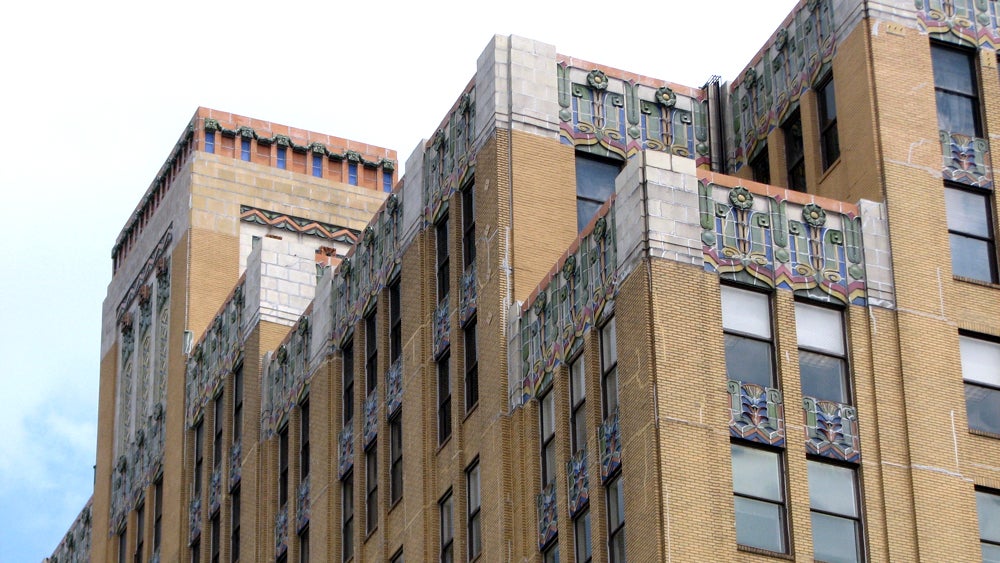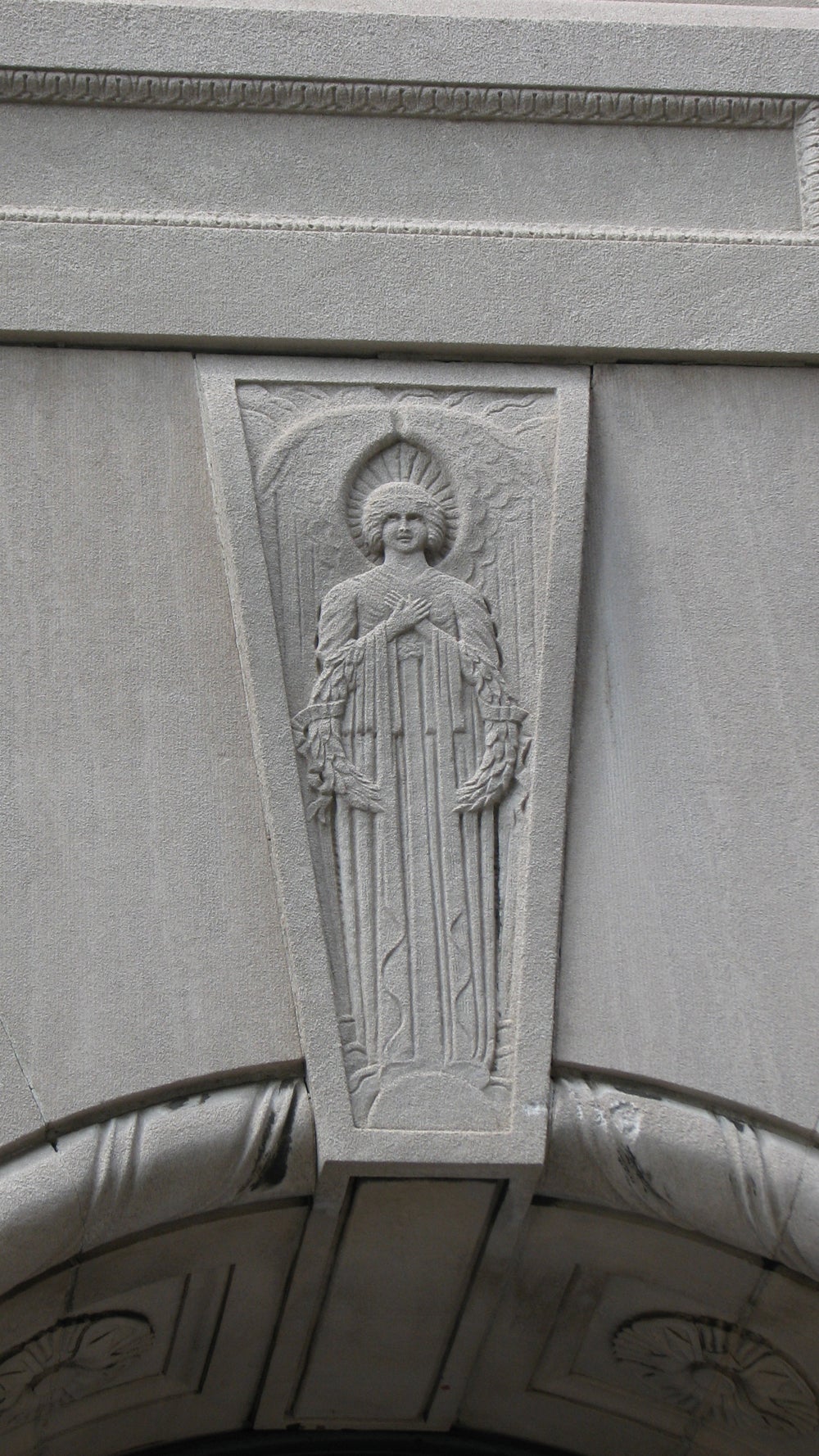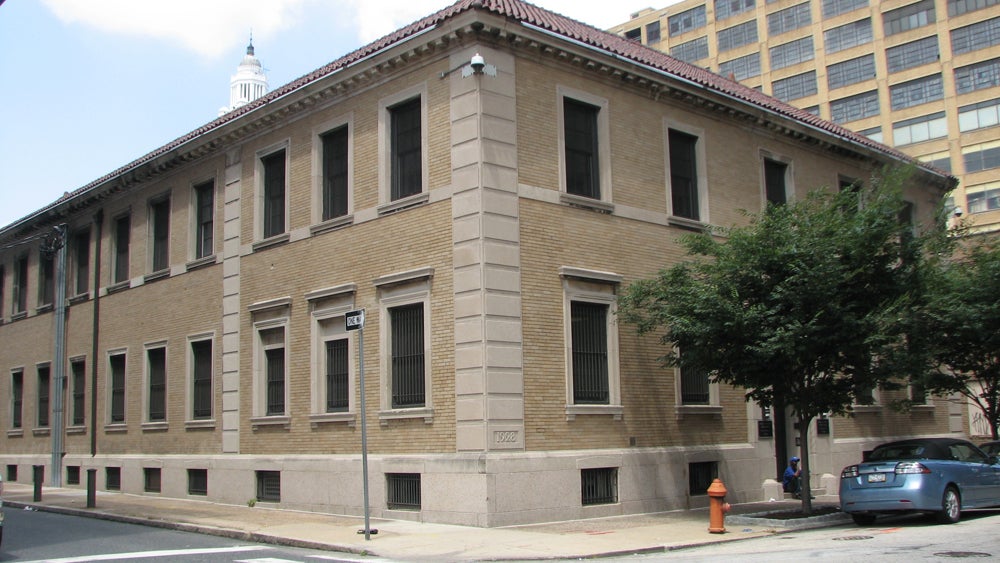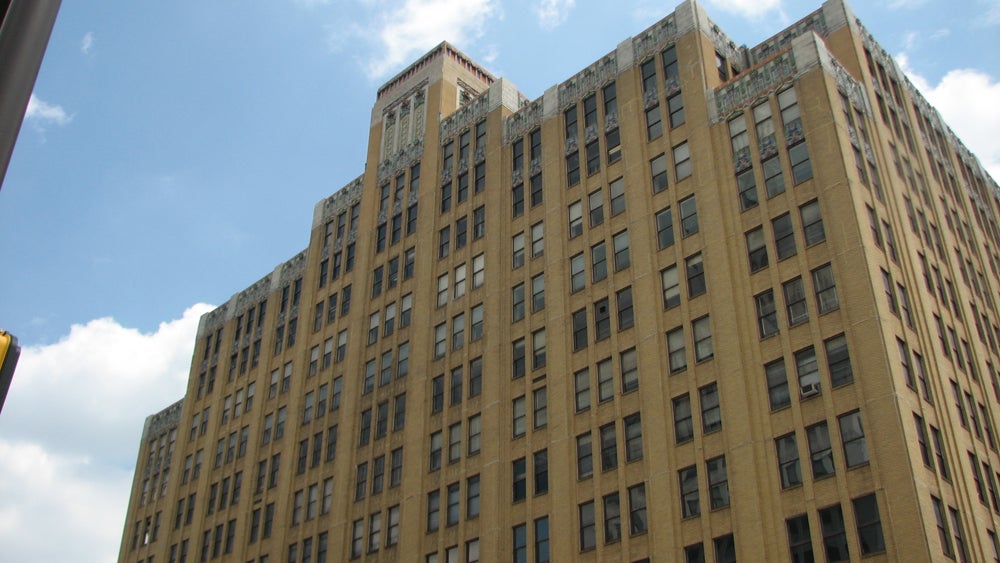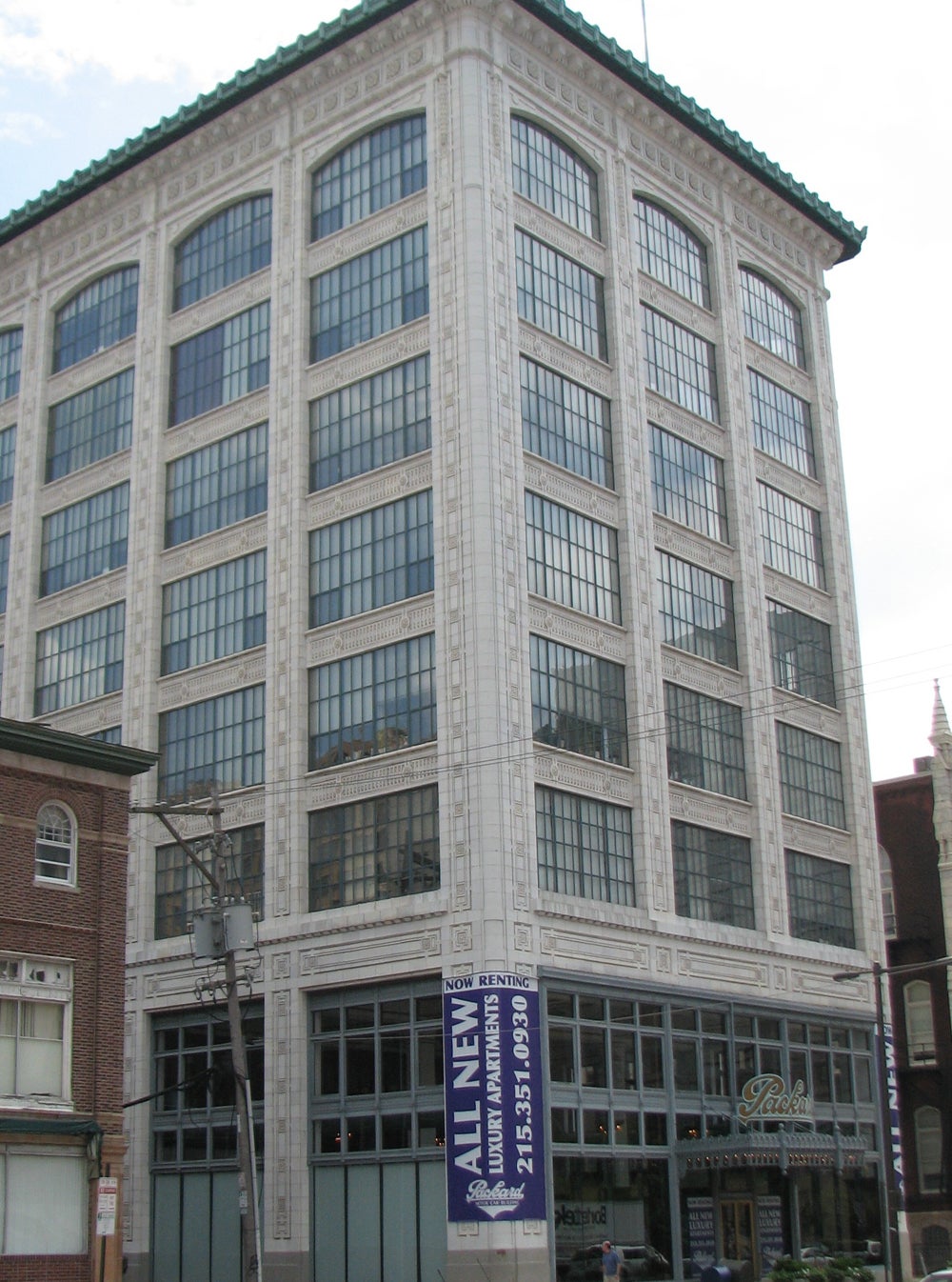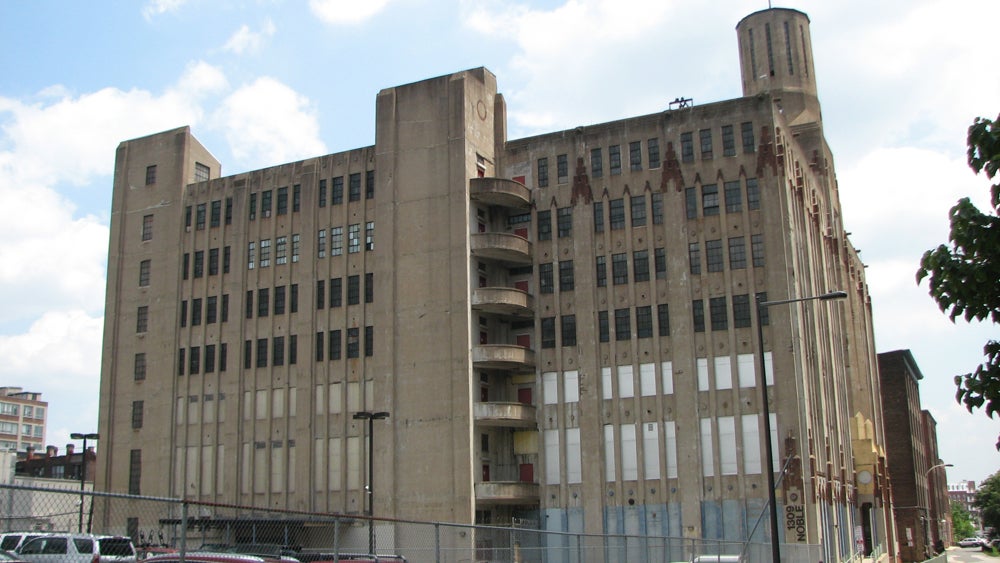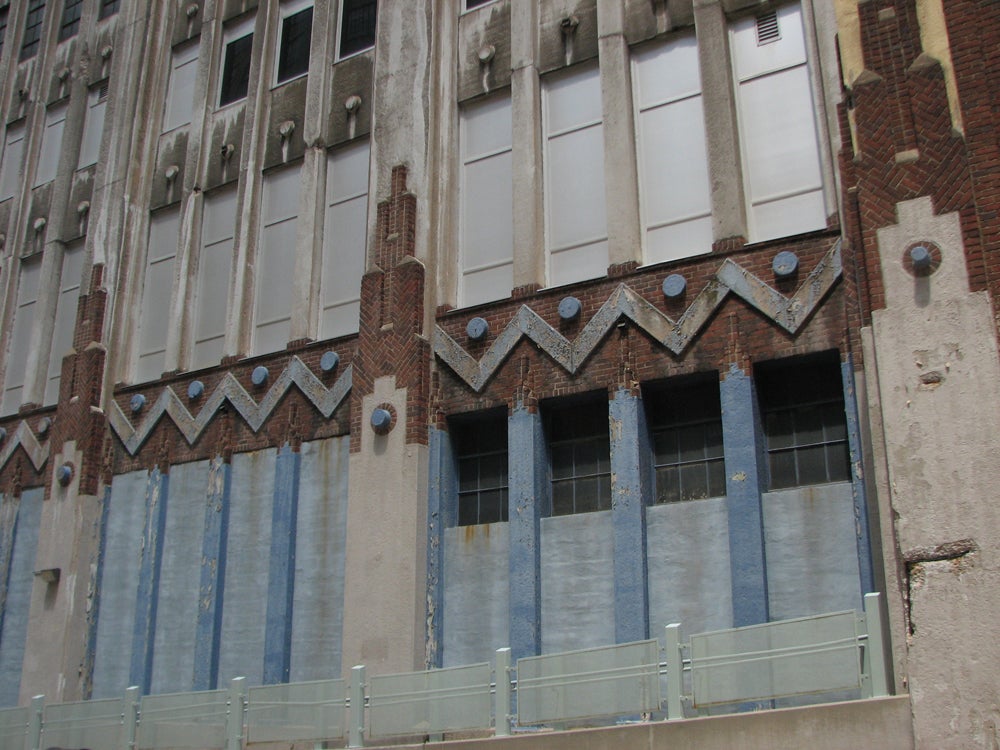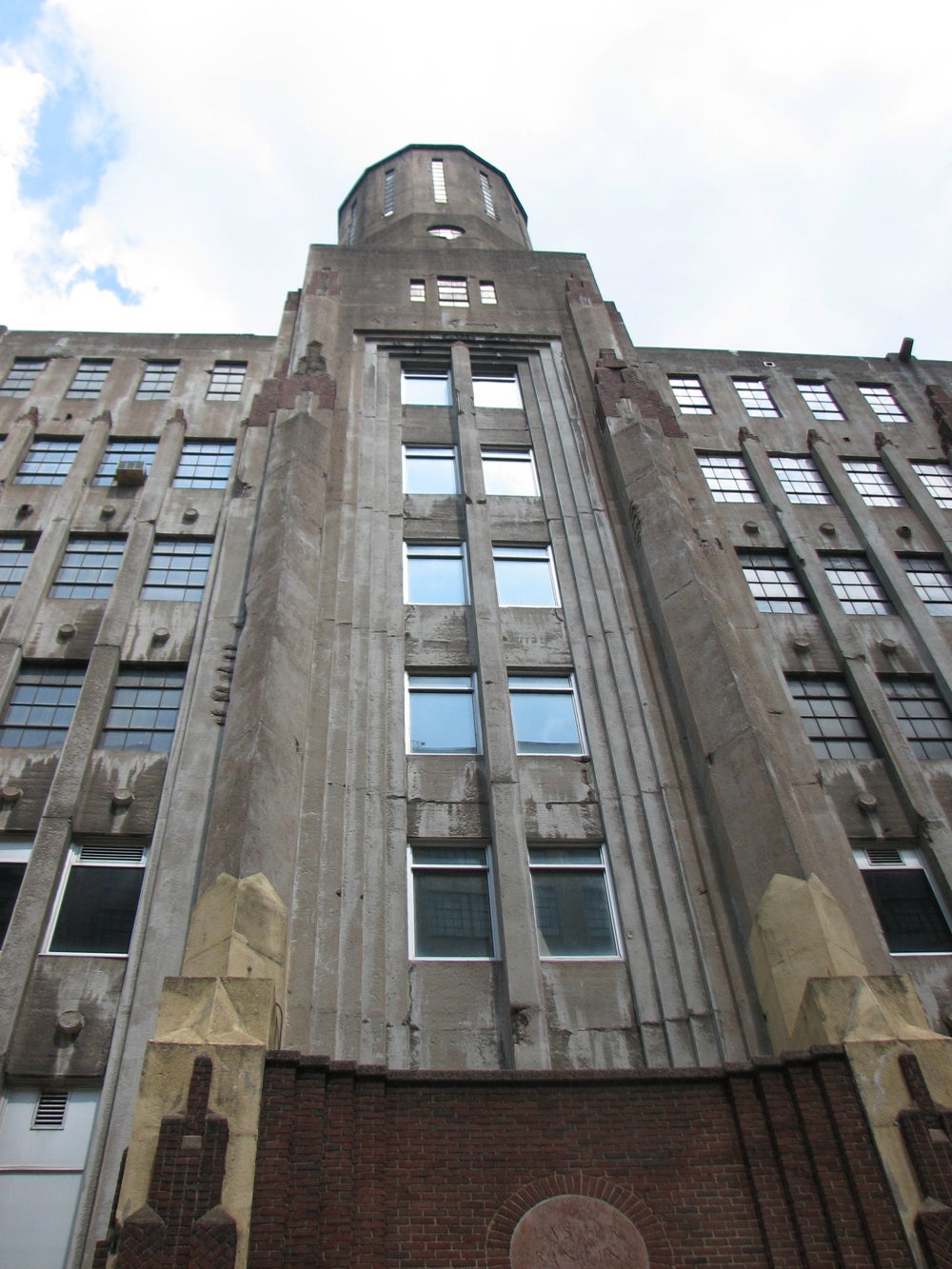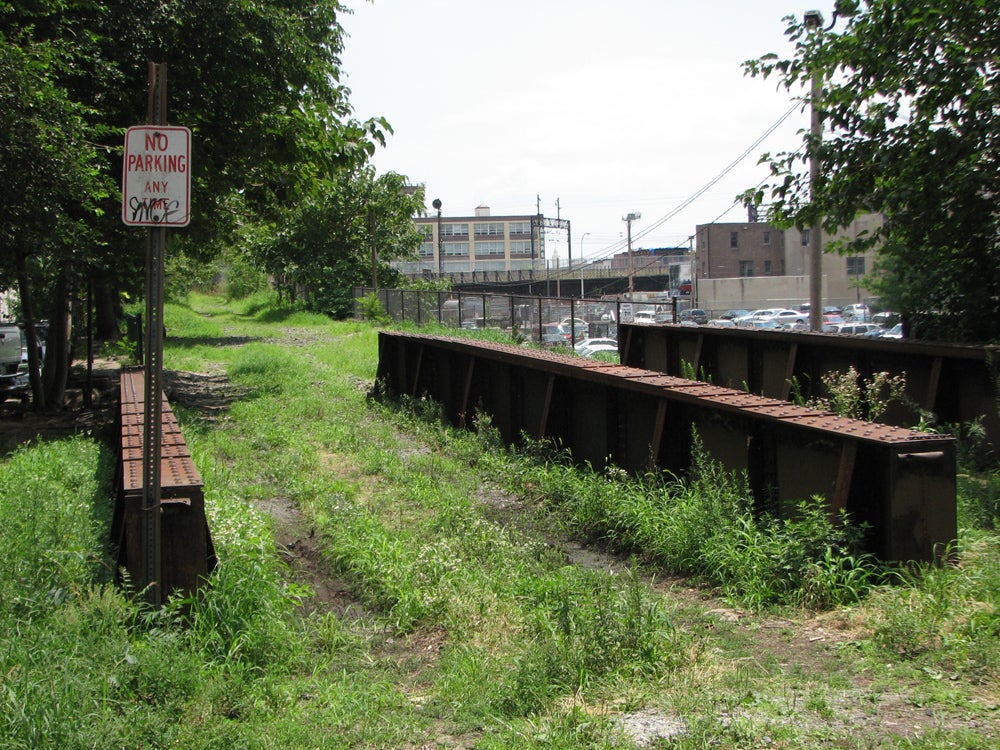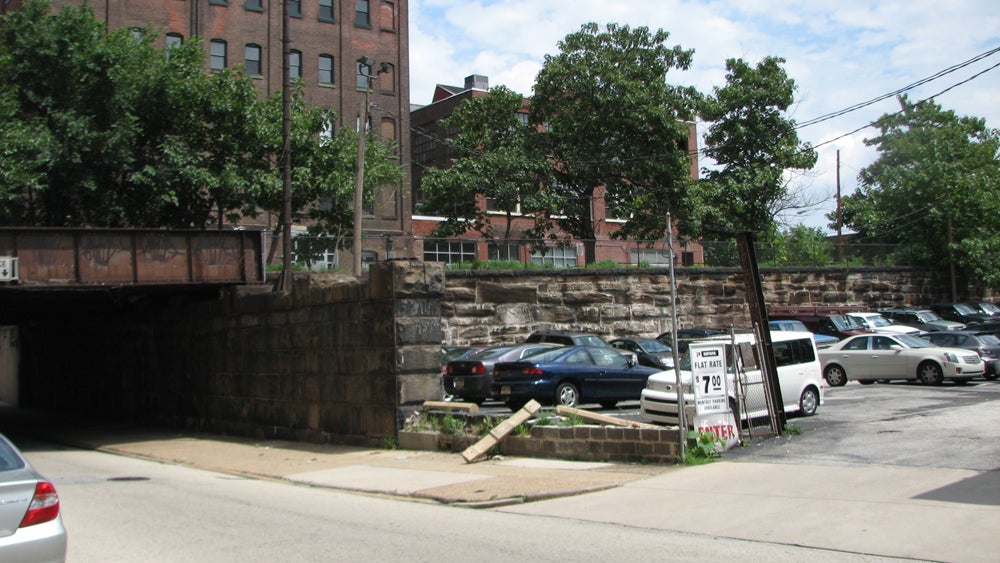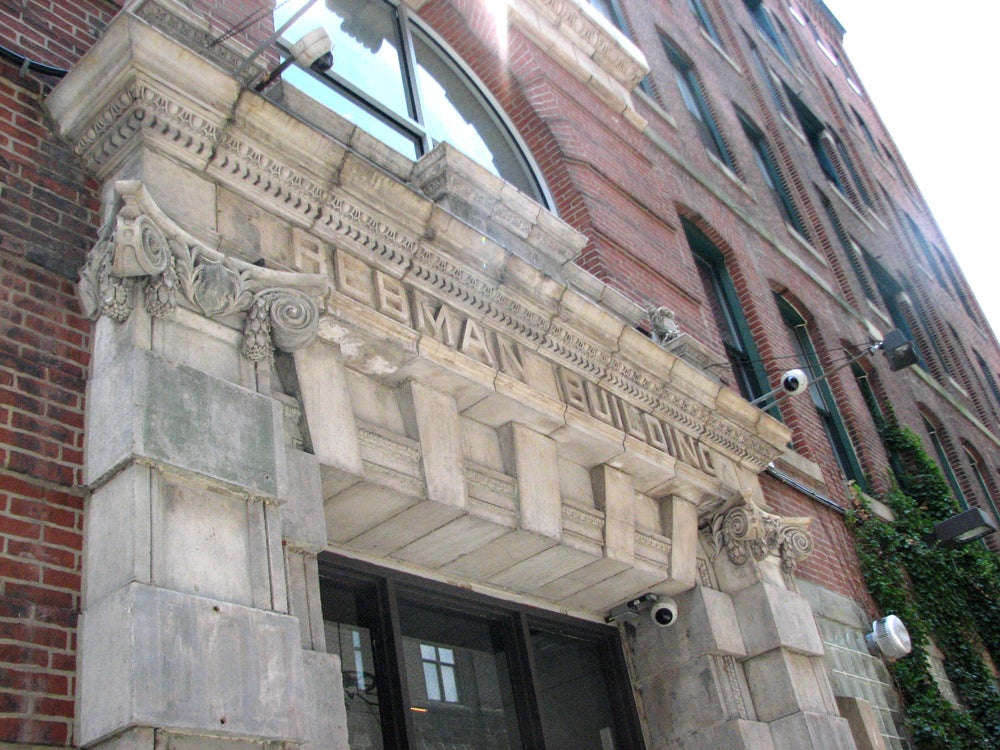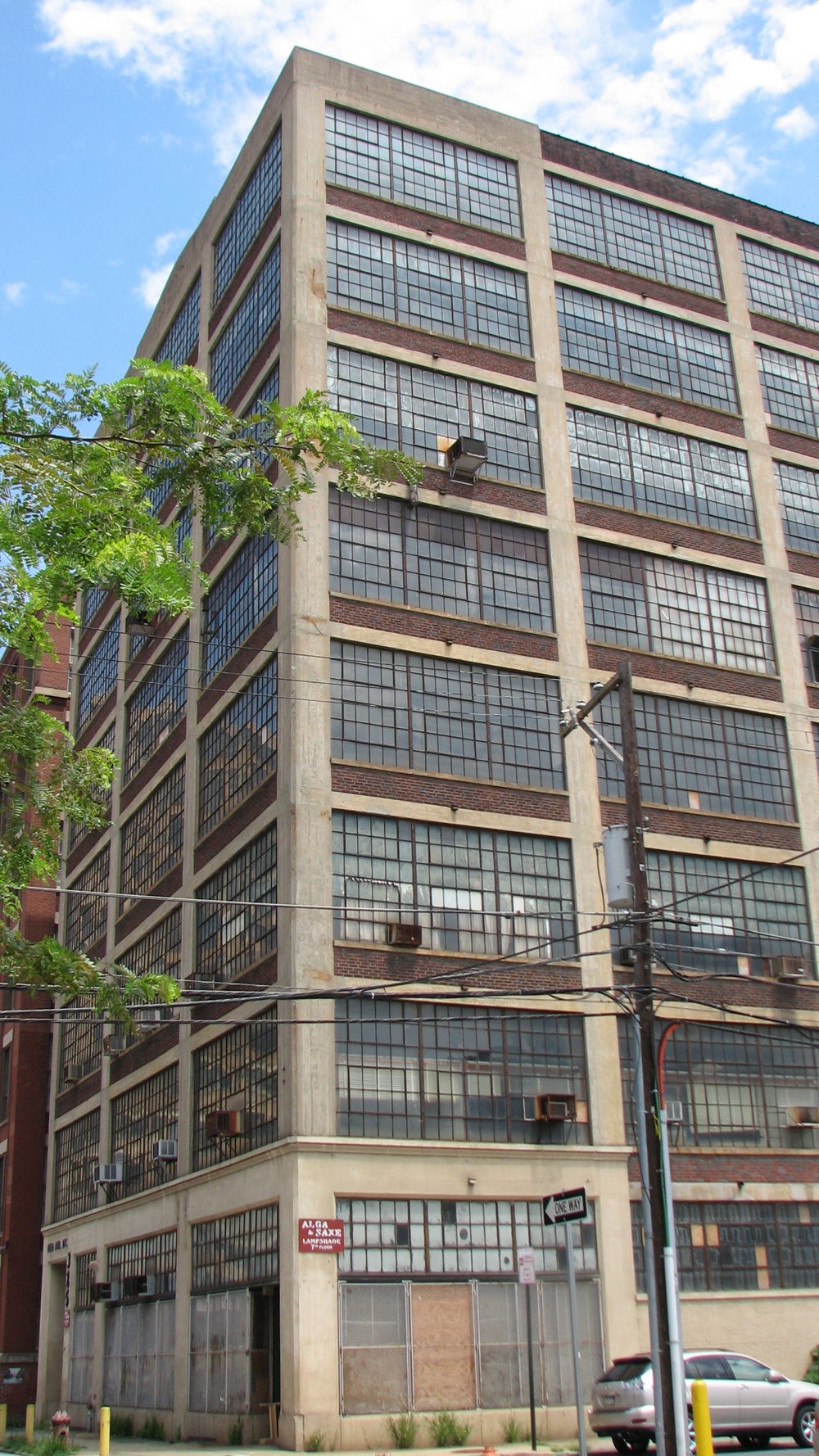Gritty Callowhill is recognized as National Historic District
The newest national historic district in Philadelphia is not what you might expect. It isn’t a mall of Revolutionary landmarks, a neighborhood of Colonial homes, or a row of 19th-century brownstones. It is instead a collection of industrial buildings spanning more than a century of commercial construction in a gritty, often forgotten slice of the city.
In late June, the National Park Service approved the listing of the Callowhill Industrial Historic District on the National Register of Historic Places, following a two-year nomination process conducted by Powers & Company, Inc.
The district is bounded by North Broad Street to the west, Hamilton Street to the north, Pearl Street to the south, and 12th Street and the curve of the Reading Railroad Viaduct to the east. It is a relatively small historic district of 66 resources – 39 contributing buildings, one contributing site, one contributing structure, 24 non-contributing sites and one non-contributing building.
But within the 14 city blocks, covering about six acres, is a timeline that marks the evolution of industrial architecture over 129 years, with examples by some of the great designers of their day. They include the former City Morgue built by Philip Johnson in the 1920s in the Mission Revival style; Philip Tyre’s astounding, but seldom noticed, Art Deco creation, the Lasher Building; and the Wilson Brothers’ stone, brick and metal dragon, the Philadelphia & Reading Viaduct.
Other towers of brick, steel and concrete trace the story of industrial and manufacturing growth in Philadelphia and now have a secure place in the city’s history and skyline.
Starting With One
The nomination of the Callowhill district was sparked by the owners of the Heid Building, 323-329 N. 13th Street, who were pursuing historic tax credits to transform the 1928 concrete and steel structure, where accordion envelopes were once the major product, into a residential and commercial building. The owners sought the help of Powers & Co. to get the Heid listed on the National Register.
Robert Powers is a veteran of the field. After starting his preservation career creating a master plan for historic resources in Schenectady, N.Y., he was trained at the Columbia University preservation program and worked with the Central Park Conservancy. In the early 1980s he came to Philadelphia to work in the regional office of the National Park Service, reviewing projects in 17 states that were seeking historic tax credits. His work included consultation on restoration and management of resources at the Taj Mahal and tourism in Agra. In 1995, he started Powers & Company with a team of architectural consultants, conservators and historians. Their projects have included assistance in the transformation of the Board of Education Building on the Parkway and the Nipper Building in Camden.
The owners of the Heid had previously worked with Powers on obtaining tax credits for renovation of the Lithograph Building, which later fell in the path of the expanding Pennsylvania Convention Center.
The Heid is “a nice building,” Power said, but he wondered if it had enough qualities on its own to get listed. Still, he submitted the nomination. The state was ambivalent about the individual building.
“Instead, they encouraged us to look at it on a broader context, and at the possibility of a historic district. The owners agreed and said let’s move forward. That’s what started the whole thing.”
The Story of Callowhill
View Callowhill Historic District in a larger map
Powers & Company began a survey of the neighborhood, determining what historic resources still stood and their significance, not only architecturally, but also in the industrial history of the area. They identified 1830 as their beginning point because of the remnant of residential buildings – small, two- and three-story row houses – that survived from that period. They chose 1959 as their end point – a 50-year cutoff from today.
What ties the district together, Powers said, is the way the buildings exemplify changes in the industrial design and architecture from the late 19th to early 20th centuries. “They go from standard brick and heavy wood beam construction to the quite elaborate use of concrete and steel design for industrial uses. It’s very nicely displayed in this district.”
Then there are the names behind the buildings. Ballinger & Perot, who later built the Atwater Kent Radio Plant on Wissahickon Avenue, are represented in the Callowhill district by the 1903 Rebman Building, 429 N. 13th St., the 1912 Smaltz Bulding, 315-323 N. 12th St., and the 1909 Goodman Brothers & Hinlein Company Building, 1238-1242 Callowhill St. William Steele & Sons created the majestic 1931 Art Deco structure at 401 N. Broad St., the former Terminal Commerce Building, the headquarters for the Reading Railroad, and “one of the premier buildings in the city,” Powers said. The Steeles also built Philadelphia’s first skyscraper, the Witherspoon Building on South Broad, with ornamentation by Alexander Milne Calder, and later Shibe Park.
The Lasher Printing Company, 1309-1325 Noble St., was built by Tyre in 1927 and is “probably the best building in the district,” according to Powers. “It’s kind of tucked away” on the tiny street off the 400 block of Broad, “and people don’t really see it. It’s one of the most exciting buildings in the city.”
The district nomination, prepared by Powers & Company researcher and writer Sheryl Jastrow, describes the Lasher’s “exuberant raised chevrons and circles in concrete, curved concrete exterior fire stair landings, and a glazed concrete faceted cylindrical lantern punctuating the center of the building. … The decorative molded concrete on the exterior” of the building “pushes the physical limits of reinforced concrete to its maximum.”
“It’s one of the most exciting buildings in the city,” Powers added.
In addition to its architectural elements, the district’s significance lies in its role in commerce and industry. “An interesting mix of industrial uses took place here,” Powers explained.
Dress makers and printing businesses occupied the Goodwin Brothers building. The Smaltz Building was devoted to ladies’ shoes. The 1920 Wolf Building, 340 N. 12th St., housed manufacturers of envelopes, folders, stationary and drinking cups.
The railroad, of course, had a major role in the development of the district. In the 1830s, the Reading Railroad laid tracks along Noble Street that ran to the Delaware River. As part of their construction of the Reading Terminal Train Shed and Head House, the Wilson Brothers — whose 300 projects in the city included the “Chinese Wall” viaduct for the Pennsylvania Railroad and the Broad Street Station train shed — elevated a branch of the tracks to connect directly into the Reading Terminal. “The Reading Viaduct was important for bringing commerce into the Terminal and the associated development that took place because of its proximity to the Terminal,” Power said.
The construction of the Terminal Commerce Building at Broad and Callowhill firmly established the presence of the rail industry in the district.
Just a few blocks south of the rail headquarters on Broad rose an automobile row of showrooms and suppliers, including the 1910 Packard Motor Company building, 315-321 N. Broad, designed by Albert Kahn; the 1910 Willys-Overland Motor Company, a Colonial Revival building, 323-327 N. Broad; and the 1911 U.S. Tire Company building, 329-331 N. Broad.
“This district was a real hodgepodge,” Powers said, “where a lot of things were going on.”
Losers and Winners
A number of noteworthy structures did not survive the changing face of the district. Among the buildings that were razed was the Gothic-inspired, brick and stone First Regiment Armory of the National Guard, which was built at 335-347 N. Broad in 1882, expanded in 1904, and demolished in the 1970s. The site is now a vacant lot.
An Italianate-style Primary School was constructed in 1867 on Wood Street near 12th, and was replaced in 1919 with the Philadelphia County Courthouse designed by J.T. Windrim. That lot is also now vacant.
Coal yards that occupied the block between 12th and 13th Streets, adjacent to the Viaduct, were converted into a parking lot in the 1970s, still retaining its role as open space, Powers noted.
Other buildings in the district have previously been recognized with listing on the National Register: the Packard Building, the Terminal Commerce Building, the Goodman Brothers Building, and the Smaltz Building.
Maintaining Integrity
In determining the boundaries of the Callowhill district, Powers & Company staff debated “where to draw the line, because you can extend it east or north. But it kind of falls apart at various points,” Powers said.
“One of the major discussions we had with the neighborhood residents was that they wanted us to make the district much bigger,” he said. They wanted to see the district continue along the Reading rail line to Spring Garden Street, where two other Reading buildings, a station and freight depot, once stood.
Proposed nominations must be reviewed by the state’s historic preservation office and its National Register Review Board. In the case of Callowhill, “the state was reluctant to continue this branch,” Powers said. “They suggested they could do this as a separate district at a future date. It’s unfortunate that we have only a portion of the Viaduct, and that it terminates with the Reading building.”
The proposed concept of a linear park on the Viaduct would be “wonderful,” Powers added. “This area doesn’t have a lot of open space. This would be a tremendous idea.”
In reviewing the nomination of districts, the state considers the overall integrity of the area. Many of the non-contributing sites in the Callowhill district are parking lots. “The state will look at how many holes there are. If there are too many and it’s too disjointed, they’re not going to list the district.
“If we had extended this district farther north or east, there’s less integrity than in this compact district. They’re very picky about that,” Power said.
“One of the values here is that Callowhill is a gritty industrial area. So an empty parking lot is not as detrimental here as in a pristine residential area.”
A Future for National Historic Districts
Among the supporters of the nomination of the Callowhill district was John Gallery, executive director of the Preservation Alliance for Greater Philadelphia.
“There haven’t been a lot of new National Register districts created in Philadelphia” in recent years, he said. “It’s something we’re going to look into more this year, because those districts get access to investment tax credits to help with rehabilitation.”
Callowhill was a neighborhood that was already undergoing a lot of rehab, with the former commercial and industrial properties being transformed into condominium and apartment buildings, Gallery noted.
The Preservation Alliance has a grant to help look into the possibility of nominating additional districts for the national registry. “What we’re interested in is areas like that, areas where private development has already started, and other opportunities could be made more feasible if people had access to the investment tax credits as part of the financing.
“Callowhill is a good initial example of the fact that there are other places in Philadelphia that would be eligible. We’ll be looking at what some of those areas will be.”
The Heid Building, which sparked the Callowhill nomination, will be one of the first projects to benefit from the district’s new status. And there are many other good candidates in the neighborhood for renovations assisted by the tax credits, Power said.
He also said his company is looking at other potential national historic districts in the city, particularly to the north.
“North Philadelphia has tremendous historic resources. We’ve looked at a lot of buildings north of Girard Avenue, along 10th Street and at 5th, 6th and 7th Streets north of Girard.”
The company is currently examining buildings in Fishtown, on Columbia Avenue and Tulip Street. “There are a number of wonderful industrial resources in that area along Frankford Avenue, continuing through Fishtown. Again, it becomes a question of integrity, because you can have a really great building and then two blocks where there’s nothing else. The question is linking those buildings and how you make a district out of those,” he said.
Powers & Company works in the states of Delaware, New Jersey and beyond, but Pennsylvania’s review board “seems to have a higher standard. You really have to make a case in Pennsylvania.”
But, he said, “if you really concentrate your efforts in a zone and can nominate a district, it will have tremendous benefits to the area. It really can help broaden Center City from its smaller confines.”
Contact the reporter at ajaffe@planphilly.com
WHYY is your source for fact-based, in-depth journalism and information. As a nonprofit organization, we rely on financial support from readers like you. Please give today.



